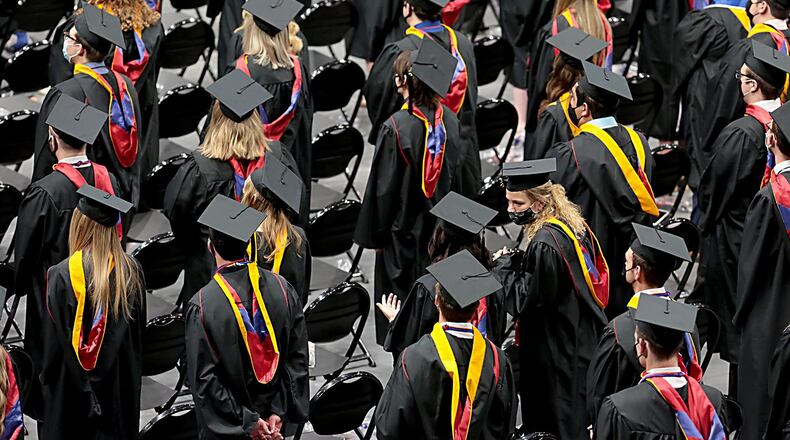He called for further reforms, including lowering student loan interest rates, making plans more affordable and easier to understand, working with borrowers in default and standardizing the servicer policies and systems borrowers must deal with.
Program basics
What: The plan would cancel up to $20,000 of federal student loan debt for students who had Pell Grants, and up to $10,000 for non-Pell Grant students. The Biden administration said the proposal is aimed at those most likely to default once loans restart.
Who: Loan forgiveness is for those with federal student loans, not private loans. To qualify, borrowers must have annual income during the pandemic of under $125,000 (for individuals) or under $250,000 (for married couples or heads of households). Nearly 8 million borrowers may be eligible to receive relief automatically because the government already has their relevant income data.
When: The U.S. Department of Education said an application to have loan debt canceled will made be available no later than the end of the calendar year.
How: Borrowers can sign up for email updates on the loan forgiveness process on the U.S. Department of Education website at ed.gov/subscriptions.
More details
For some, the program will fully erase their remaining student loan debt. For those who will have more left to pay, there are other changes.
The USDOE again extended the pause on student loan repayment, interest, and collections, through Dec. 31, 2022. That means borrowers should plan to resume payments in January 2023 — for the first time since March 2020.
The proposal would cut in half — from 10% to 5% of discretionary income — the amount that borrowers have to pay each month on their undergraduate loans, according to USDOE. Borrowers who have both undergraduate and graduate loans will pay a weighted average rate.
The plan would fully cover the borrower’s unpaid monthly interest, so that — unlike current income-driven repayment plans — a borrower’s loan balance will not grow so long as they are making their required monthly payments. It also allows some qualifying borrowers to have their loans forgiven after 10 years instead of 20.
However, the Biden administration’s student loan plan is expected to be challenged legally, since Congress hasn’t previously given the president authority to spend money in this way.
Kevin Willardsen, an economics professor at Wright State University, said he hoped that more people will know about the income-based repayment, which eventually forgives people who have paid their loans consistently for a specific amount of time.
“Those programs are grossly underutilized, primarily because most people don’t even know about it,” he said.
What locals think
Sara Sheplar, a 2016 college graduate living in Miamisburg, said the student loan debt forgiveness would likely be helpful to her.
“A lot of people are paying their payments like how they should be and it’s just paying the interest,” Sheplar said. “A lot of people think that all of the debt should be forgiven, but I think that $10,000 isn’t asking too much.”
Jeffery Ruffing, a retired chemist living in northwest Dayton, disagreed. He said people who make a promise on their loans need to pay it back.
“If you take out a loan, you are promising to repay. You borrowed the money,” he said. “Whether it’s your parents, a bank, federal government doesn’t matter who, you’ve made that contract and a promise.”
The DOE made available a legal memorandum regarding its authority for the program.
According to the Education Data Initiative, a little more than 15% of the state’s population has student loan debt. The average debt for those Ohioans is $34,721, according to the same source. About half of Ohio’s student loan borrowers are under 35 years old, and the state’s student loan total is about $62.3 billion.
About the Author


